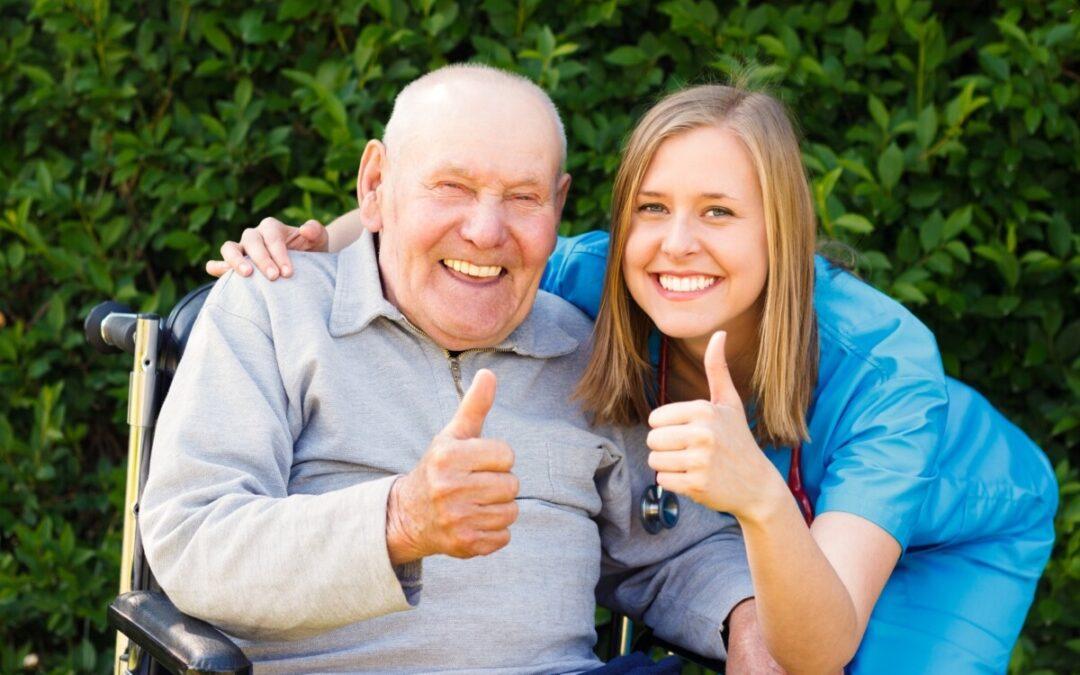Healthcare costs in the US continue to rise. The vast majority of US healthcare costs are for patients living at home with one or more chronic disease conditions. For example, the US spent $8.3 billion on preventable ER visits in 2018.
The US healthcare systems have tried various approaches to reduce at-home costs, such as telehealth software, virtual visits, monthly nursing calls, etc. These attempts have had limited success, partially because many at-home patients have difficulty responding to these alternatives.
Regardless, the best and least expensive place for the elderly to stay is at home as long as they have “appropriate” care. Staying at home helps patients avoid debilitating disorientation and depression that comes from hospitals, nursing homes, etc. However, staying at home may require the use of non-medical caregivers (family, volunteers, paid, or a combination of all.)
There is a cost associated with caregivers, but it is dramatically less than the alternatives. Now, is there a way to use non-medical caregiver information to help reduce medical costs and improve health outcomes? Harvard Medical School gave a positive review concerning the value of using this type of non-medical information. It costs much less and is collected far more frequently than anything provided by the current healthcare systems. Can these observations be valuable? Early research indicates – Yes. Additionally, there are, “relatively few false positives”1.
Realistically, caregiver performance varies widely. How do users of this information (families, agencies, providers) verify “appropriate” performance? One alternative is Home Care LINK. This software service supports the various needs of the care manager arranging the caregiver support.
Home Care LINK (HCL) has developed an approach that can be used by any caregiver (family member, neighbor/volunteer, paid caregiver, etc.) to record their activities, both actions and observations.
Unfortunately, many care recipients have multiple conditions treated by multiple medical providers. In that situation a care manager, e.g. a family member, will need to consolidate those required observations. This valuable step takes a little time, but HCL is easily customized to each care recipient.
Each HCL observation is prioritized as normal or critical. If the caregiver records a critical observation, alerts are immediately sent (via text or email) to whomever the care manager has designated.
Home care LINK also features “medication reminders”. This feature focuses on monitoring a patient’s usage of a pre-loaded pill box. In addition to these human observations, it may be possible to integrate data recorded by home medical devices.
In addition to these health observations, HCL provides a means for care managers to have direct contact with the caregiver. As a result, HCL can be used to setup and schedule activities to support daily living such as bathing, meal prep, etc. The service also provides an Important Timely Reminders message board. It can alert the caregiver about appointments as well as expected visits from out of town visitors, relatives, etc.
Necessary home repairs and maintenance are something that often goes neglected when an elderly person is living alone. If the air conditioner breaks, the caregiver will be able to report that and even help schedule necessary repairs.
Home Care LINK is especially helpful for care managers who have loved ones that live miles away. Home Care LINK helps bridge that distance while allowing your loved ones to stay in the comfort of their own home. When you can’t be there, Home Care LINK can.
Every recording includes the caregiver’s name, the date and time, as well as the GPS where the recording took place. The collected raw data is automatically sent to our cloud based software at the end of each caregiver’s visit. The Home Care LINK service is available for either tablets or smartphones (Android or Apple). The cloud based software transforms raw data into useful information, sends alerts, and creates multiple reports. This information is immediately available to all authorized care managers.
Yes, Home Care LINK provides a non-traditional approach that has the potential to both reduce medical costs and improve health outcomes.
The back story: J.B. Holeman developed Home Care LINK after becoming frustrated with lack of communication when his own elderly mother was in the care of doctors and nurses. Holeman was responsible for managing the care of his elderly mother from a different state during the last few years of her life. The task represented many additional struggles beyond just the emotional burden of watching a loved one age. He was forced to rely on “hope” that everyone was doing what they were supposed to do, because his mom was not always the most reliable source of confirmation. Holeman found that getting quick, accurate answers was a struggle. The office’s responses, especially during night times and on the weekends, were vague, imprecise, and sometimes just wrong.
________
1. 1. “Preliminary Data on a Care Coordination Program for Home Care Recipients”, The American Geriatrics Society Journal, August 2016.
For more information, please visit our website
“Like” Home Care LINK on Facebook
Follow Home Care LINK on Instagram @home.care.link
Visit Home Care LINK’s YouTube Channel
Follow Home Care LINK on LinkedIn

